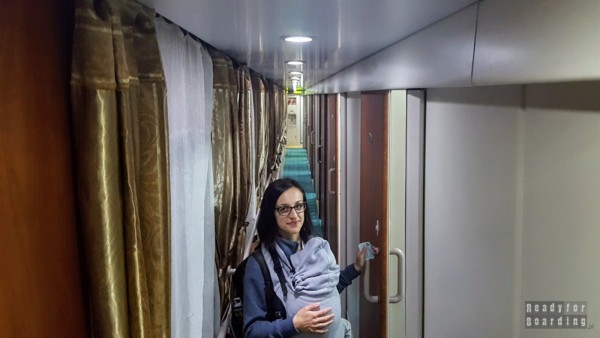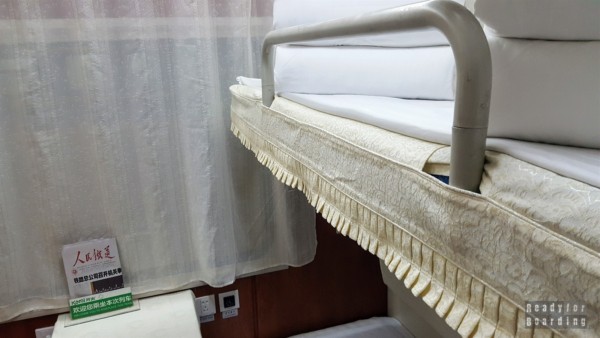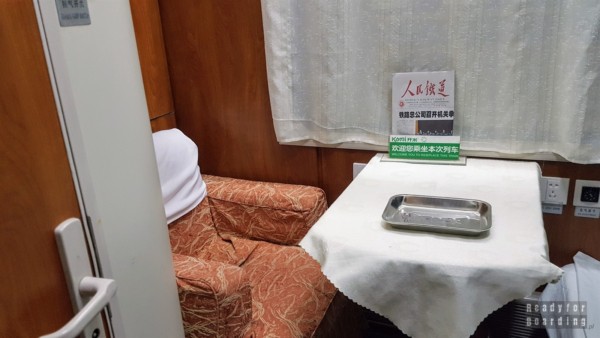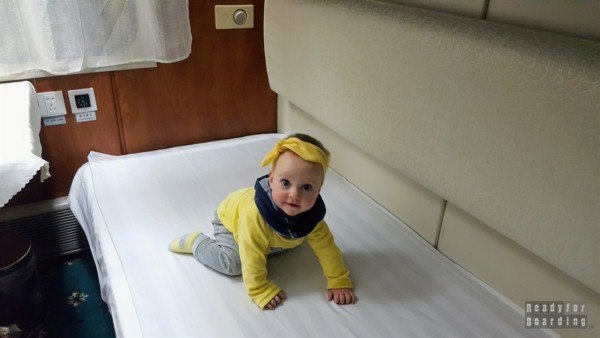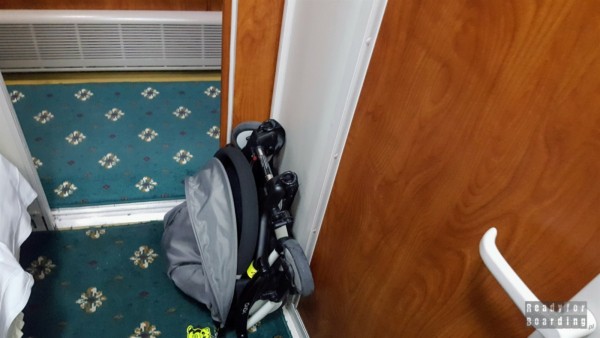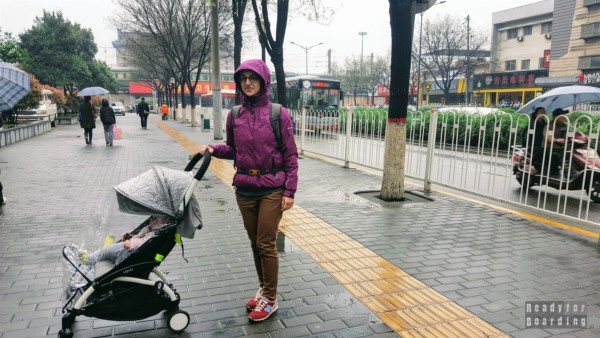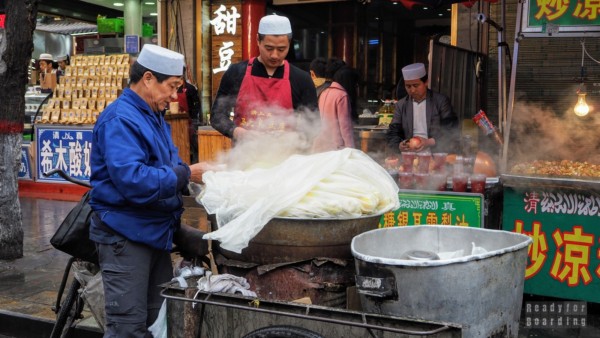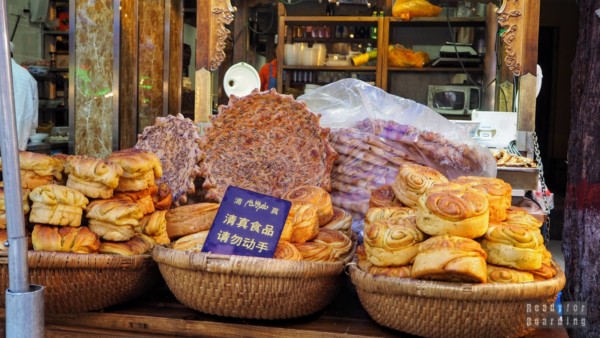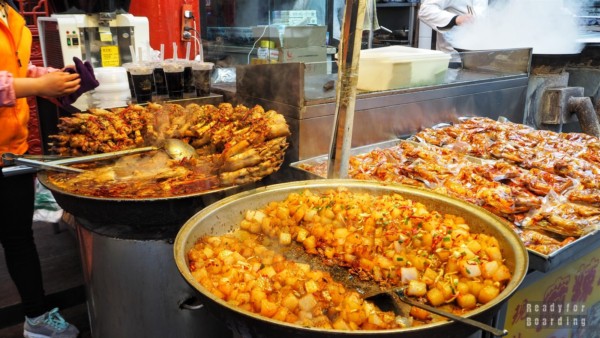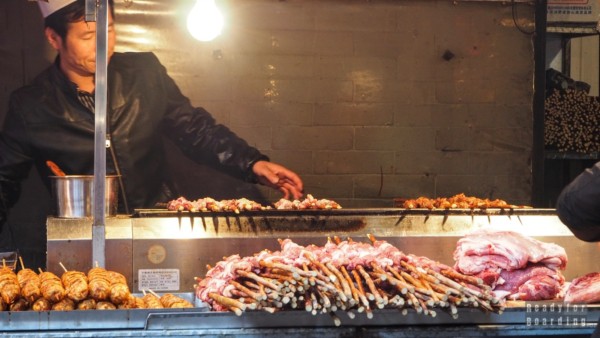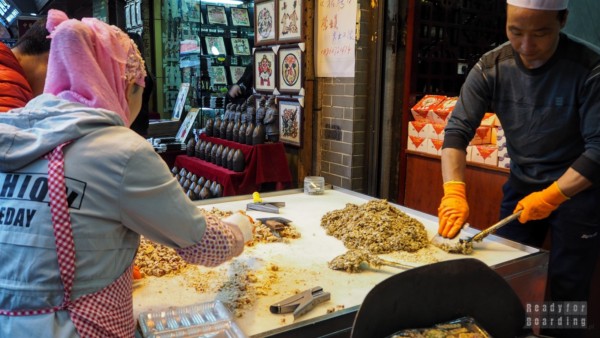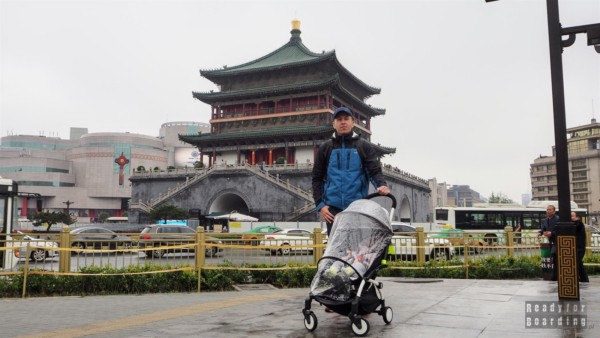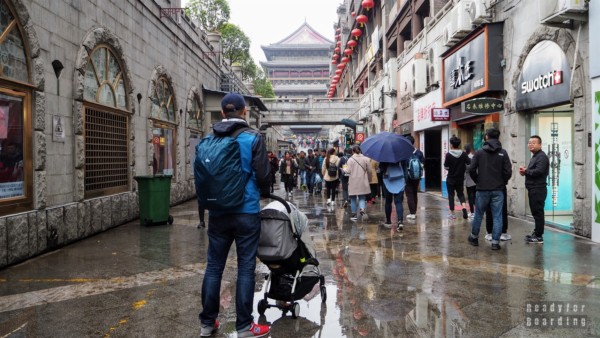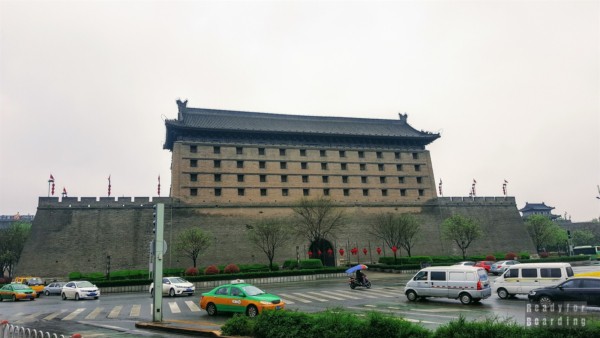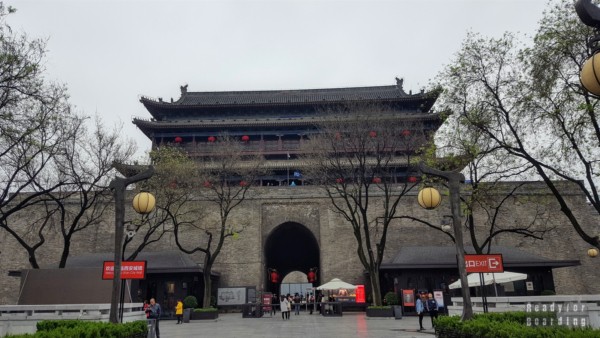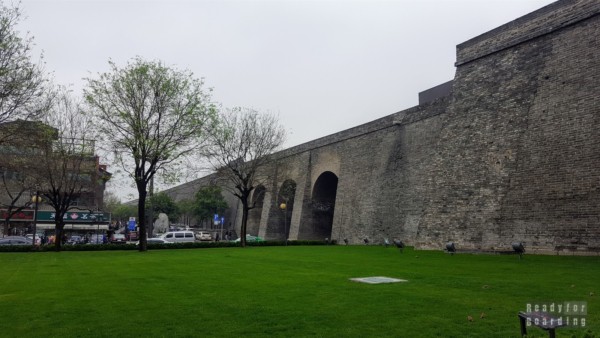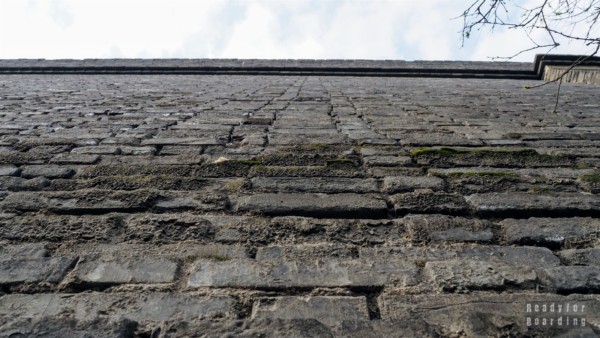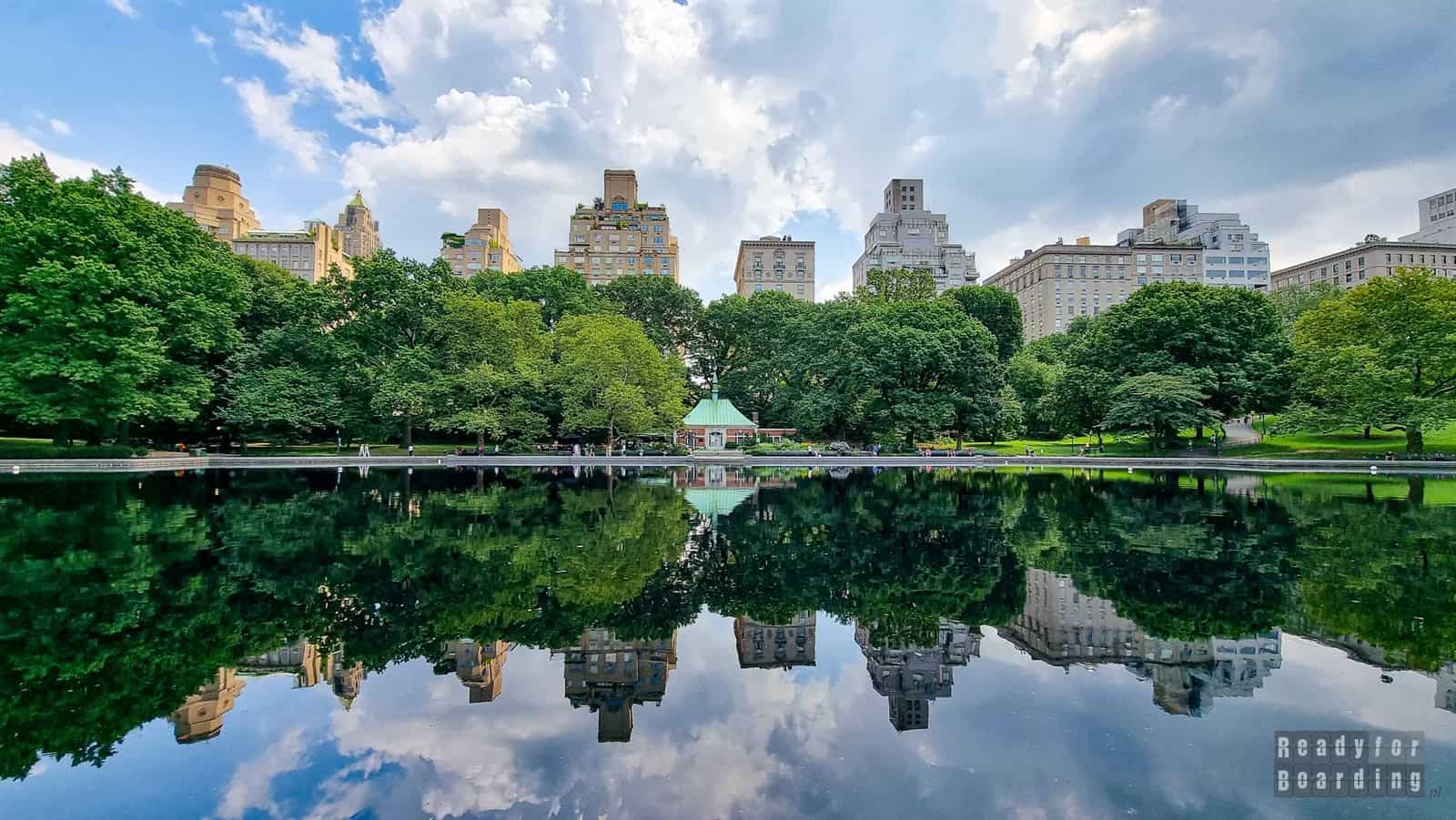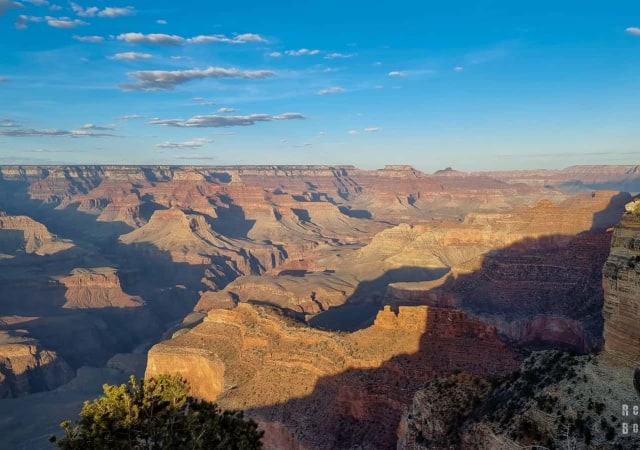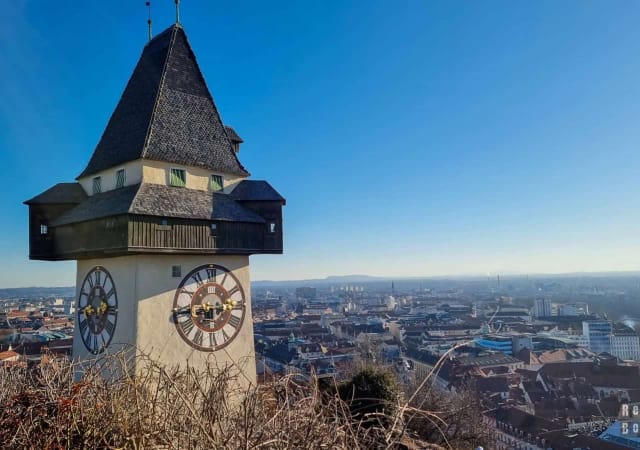If you’re wondering if it’s worth going from Beijing to Xi’an, this and the next post will convince you that it’s worth it, if only for a day :)
A few years ago, we wanted to fly to China, spend a month here, travel the length and breadth of China. We listened to stories, read books and blog accounts and wanted to embark on a similar journey. A month would be suitable to get to know the country, the culture, see many places and taste the cuisine of each region. In our situation, however, we couldn’t afford such long trips, and besides, somehow another destination always appeared on the horizon, and we kept putting off China for later and later.
Once we managed to buy the tickets and knew that this was not going to be a trip during which we would see the whole country we had to think about what we wanted to do at all and where to go (leaving aside the obvious in Beijing). Initially, when we planned the trip, we wanted to focus on Beijing and the immediate area. This was the first such a distant trip with a child, so we had doubts about how Olive would endure the time zone change (as for the acclimatization itself, we had no doubt that there would be no problem). We were also concerned about how it would be in a completely different culture and infrastructure, whether getting around with a baby would be relatively easy or the opposite.
We knew we wouldn’t see everything, but still, somewhere in the back of our minds remained the dream from years ago of riding night trains in China as well as the high-speed ones (after all, you have to compare it to the Japan’s Shinkansen). We decided to try to move somewhere further. Just where? There are so many interesting places. We chose the one that is relatively close (which may sound ridiculous, since it is more than 1,000 kilometers from Beijing!), but we always wanted to see it. Because how can you be in China and not see the famous Terracotta Army in Xi’an?!
Table of contents
Getting to Xi’an
Well, despite appearances, getting to Xi’an is easy, as there are direct (overnight) trains. Ours started at 8 pm, and we disembarked at Xi’an station around 8 am. This is the time when you can get a peaceful night’s sleep and the trip passed smoothly. In addition, of course, you save on accommodation.
We bought a higher class because we wanted to spend the night comfortably (for us and fellow passengers). The train was running quietly, and our compartment was almost “luxurious” (by local standards and our pre-conceived notions). We had one larger bed downstairs and one smaller bed upstairs, plus an armchair (just in time for feeding), a table, and even a toilet in the compartment! It was very clean, and as soon as we set off the lady from the train staff handed out boiling water in thermoses and tissues.
In fact, we did not have to move from the compartment at all, even to get boiling water :) The only thing that could be improved is the English language skills, but fortunately the lady showed a very great willingness to help, so we managed to get along.
The other way we were already on a super-fast train, but we will write a separate post about that and train travel in China in general.
After a full night on the train, we were really sleepy and rested enough to go straight into town. Maybe not so literally, because first we dropped things off at a nearby (at least that’s what we thought) hostel. A lesson for thezł: if something has “Railway station” in its name does not necessarily mean that it is in close proximity – in this case it was almost a half-hour walk with backpacks and a stroller.
Sightseeing in Xi’an
Once we got rid of the ballast we moved towards the city walls. We decided to spend that day in the strict center of Xi’an and go to the Terracotta Army the next day.
Xi’an is quite a city, with a population of a bagatelle 6.5 million people! It is home to two major train stations, an airport, and there are three subway lines (with more under construction and planned, for a total of 15!).
The city is definitely different from Beijing, we felt there were larger spaces, wide sidewalks and large distances between blocks. The strict center of the city is surrounded by historic walls, but this does not mean that crossing them you will enter a world of old, historic buildings. In a way, this is true, but nevertheless we are largely entering a modern district with shopping malls, Western cafes and restaurants, and fashionable and exclusive fashion houses. Interestingly, on the same street there are counterfeit stores of well-known brands right next door.
However, if you go a little farther away you will see many smaller stores, stalls or bars where the city’s less affluent residents go. There were a lot of just such stalls around our hostel, where we could eat breakfast and take dinner to go.
The city has a long history of more than 3,000 years: it was the capital of thirteen dynasties, played a very important role in the development of the Silk Road – it was the beginning/end of the Silk Road, was home to emperors, poets, monks, soldiers, and intertwined numerous cultures and religions.
There are many places in Xi’an itself that surprised us greatly, starting with the Bell and Drum Towers, which we thought were more impressive than those in Beijing, and ending with the Muslim neighborhood with its mosque. Even the poor weather didn’t prevent us from finding that Xi’an is a very interesting city.
Muslim neighborhood in Xi’an
It may surprise and surprise some, but a Chinese person can be a Muslim. What’s more, there is an entire quarter in Xi’an where Muslims have lived for many centuries, and the place has already been covered in fame and is the destination of many who come to Xi’an. And no wonder, we were very surprised by the atmosphere here.
It is a bustling, noisy place, with lashingly lit streets even during the day. There are plenty of stalls and stores where we can buy souvenirs, local handicrafts, and eat deliciously – from fried crabs, meats, to Muslim baked goods, to Thai ice cream.
We can get a sneak peek at how sesame seeds, cakes or challah are made in the fumes of a mixture of exotic scents.
It is a unique place, not like the markets in Arab countries, where solicitors pop up every step. Here you can pass relatively quietly and buy nothing. Relatively, however, because it is crowded and cramped. We also noted that the women traditionally had their heads covered, which was quite unusual for China.
It is also home to the famous Grand Mosque, which can be hard to get into and admission is charged. This is one of the largest mosques in China, although it may come as a surprise to many people passing this building that it is actually a mosque, as the appearance differs from the mosques we know. It is a peculiar blend of Chinese and Muslim architecture, incorporating Chinese symbols and traditions.
Drum and Bell Tower and the Walls of the City
Xi’an has its two towers, which are more impressive than those in Beijing. Both can be entered, with an admission fee, of course. The origins of both towers date back to the 18th century.
There is also a nice view of the city from the wall that surrounds the city: you can climb up using one of the paid entrances and walk around the city. The wall is 12 meters high and the length is about 14 kilometers, so it is quite a long walk.
Xi’an is one of the few cities in China where the city walls still survive.
Summary
Before wrapping up, here’s another little tidbit, a dentist’s office as seen from Xi’an’s main street – this city surprises you at every turn:
We drove to Xi’an mainly to see the Terracotta Army, but we knew that this historic city was also worth a visit, so we stayed here for more than one day (one day is enough to get there, see the Army and return to Beijing).
It was an interesting departure from crowded, cramped, noisy and polluted Beijing. The Muslim quarter is all the more interesting because it is already a completely different world, which we highly recommend visiting.
You can read more about train travel in China here >>


